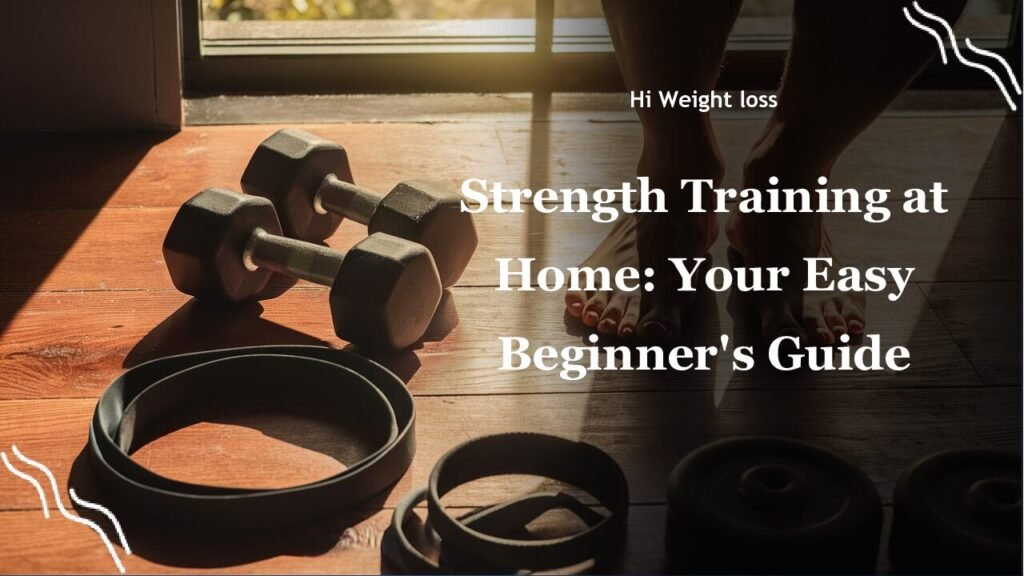“`
Are you pushing yourself to the limit in the gym every single day, thinking that’s the only way to build muscle? Many of us fall into that trap, believing that muscles only grow during intense workouts. However, the real secret to muscle growth often lies in the recovery phase. This article will explore how rest days, often overlooked, are actually “growth days”, allowing your body to rebuild stronger than before, and we’ll delve into the science behind this concept, and how it ties into optimizing your training.
Do Muscles Grow on Rest Days?
It’s a common misconception that muscle growth happens only when you’re lifting weights or doing other forms of resistance training. I used to think the same way. I’d hit the gym hard every single day, thinking that any rest day was just slowing me down. But what I learned, through my own experience and from others who are in the fitness game, is that our muscles actually grow when we rest, not just when we train. In fact, during the exercise process, your muscle fibers break down, and it’s during rest that they rebuild even stronger than before.
The Science Behind Muscle Repair on Rest Days
When you lift weights, you are essentially creating microscopic tears in your muscle fibers. These aren’t injuries, but they do need time to be repaired. Rest days provide the time needed for cells called fibroblasts to repair these microscopic tears, leading to stronger muscles. This repair process is crucial for muscle growth, and without rest, your body can’t properly rebuild, which is really interesting.
Think of it like renovating a house: you first need to break down the walls to rebuild them better. That’s exactly what happens to your muscles when you exercise. Then, during your recovery period, your body starts to rebuild those broken-down muscle fibers, and that’s where the magic really happens. This is the time for your muscles to adapt and grow.

It’s also important to know that rest isn’t just about staying on the couch. It’s about allowing your body to recover without the added stress of intense physical activity. It is a process that is essential for optimal muscle growth. This process requires adequate rest, along with the appropriate intake of nutrition.
The Benefits of Rest Days for Muscle Growth
Besides the repair process, rest days also help in other ways. One key benefit is the replenishment of glycogen levels. During exercise, your body uses glycogen as fuel. When glycogen levels are depleted, your body is left with less energy. Rest allows your body to refill these fuel stores, which is not only critical for muscle growth but also for preventing fatigue and ensuring you have the energy for your next workout.
Moreover, rest days are critical for avoiding overtraining. I’ve been there; pushing myself too hard for too long without rest led to burnout and even injuries. Overtraining can have an effect on your performance and impede progress; rest helps keep that in check.
It’s crucial to understand that rest days are an essential part of your training program and that ignoring them is detrimental to muscle growth and overall health. So, don’t think of rest days as a “missed opportunity,” but rather an opportunity to make your muscles stronger!
How Do Muscles Repair on Rest Days?
So, how exactly do muscles repair themselves? Well, it’s a complex process involving several factors, including the role of fibroblasts, which I mentioned above. These cells are responsible for repairing the damaged tissue. They get to work and begin the process of mending those microscopic tears created during your exercise sessions. This rebuilding not only repairs existing fibers but also makes them stronger and denser.
Another critical aspect of muscle repair is protein synthesis. During rest, your body uses protein from your diet to build new muscle fibers. This process is the foundation of muscle growth. That’s why adequate protein intake is so important, especially on rest days. This concept is emphasized by Musashi’s blog, highlighting that it is essential that we get adequate rest and nutrition to support muscle repair and growth.
Additionally, during recovery, there’s an increase in blood flow, which brings nutrients and hormones to your muscles, aiding in this repair process. And yes, this happens on rest days! This is why you might feel a bit sore or tired after a workout, especially if it’s strenuous. The soreness is just your body telling you that the recovery process has begun. In fact, a Healthline article confirms that the repair process during rest days is what leads to stronger muscles.
The Role of Nutrition in Muscle Growth During Rest
While rest is crucial, it’s only one piece of the puzzle. Nutrition plays an equally important role in muscle repair and growth on rest days. Think of your diet as the fuel that powers your body’s repair mechanisms. After a workout, your muscles need protein to rebuild themselves. This is where nutrient intake is very important.
Protein isn’t the only important nutrient. Carbohydrates are crucial for replenishing glycogen stores, ensuring you have enough energy for future workouts. When I’m recovering from a heavy lifting session, I like to make sure I have a balanced meal with plenty of protein, complex carbs, and healthy fats. It makes a significant difference in how I feel and how quickly I recover.
The timing of your meals is also important. Consuming protein and carbohydrates shortly after your workout can kickstart the recovery process. And, of course, staying hydrated is key as well, because water is involved in all the chemical processes that your body does, and is essential for transporting nutrients to your muscles for repair.
Personal Experience: Learning the Value of Rest
I remember when I first started weight training, I thought more is better. I’d go to the gym every single day, doing the same exercises, pushing myself to my limit. I didn’t understand that muscles grow on rest days, and that was my biggest mistake. The result? I hit a plateau very quickly, and felt like I wasn’t going anywhere, and I was experiencing more fatigue than ever before. I was making less and less progress, and I was often tired and worn out.
It was only after I started listening to my body that I began to see progress. After research and listening to some more experienced fitness experts, I realized the importance of rest days and how crucial they are to muscle growth. I started incorporating rest days into my routine, and I noticed a significant difference, both in terms of my physique and my energy levels. My muscles became fuller and stronger, and I was also less tired in the gym during my training sessions.
I now understand the importance of incorporating rest days into my training program; I’m not just training harder but smarter, and that has had a massive impact. I’ve learned through personal experience that this approach not only improves your workout performance, but also boosts your muscle growth significantly.
Planning Your Rest Days: How Much is Enough?
How much rest do you need? Well, it varies from person to person depending on the intensity of your training and the type of workout you do. Generally, one or two rest days per week are beneficial. Some people may need more rest than that, especially if they are doing high-intensity training or have a busy schedule.
It’s also crucial to listen to your body. If you are feeling very tired or sore, it might be a sign that you need an extra rest day. It’s also important to plan your rest days in advance as this can help you to ensure that you don’t overtrain.
Sample Weekly Rest Day Schedule
Here is a sample training and rest schedule that incorporates rest days:
| Day | Activity |
|---|---|
| Monday | Strength Training (Upper Body) |
| Tuesday | Strength Training (Lower Body) |
| Wednesday | Rest Day |
| Thursday | Strength Training (Full Body) |
| Friday | Cardio |
| Saturday | Rest Day |
| Sunday | Active Recovery (Yoga or light walk) |
Note that this is just a sample schedule and you may need to adjust it to suit your own individual needs and preferences.
Conclusion
It’s clear that the idea that muscles only grow while you are training is a misconception. The truth is that our muscles grow on rest days. By incorporating rest days into your routine, you’re not just giving your muscles a break, you are providing them with the time they need to repair and grow. The process involves multiple factors: the work of fibroblasts to repair torn muscle fibers, the replenishment of glycogen stores, and protein synthesis. And yes, your diet is crucial.
I’ve learned from my personal experience how important it is to not only train, but also rest, and that resting is not a sign of laziness but rather a critical component of the training process. My training has become more effective, and my muscle gains are better than before. When I listened to my body, I saw results! So remember, next time you’re debating whether to skip a rest day, think about the science behind it and the importance of allowing your body the time to become stronger.
Now that you understand the importance of rest days, it’s time to integrate this knowledge into your training. Why not share this article with friends or colleagues who might also benefit from knowing this information? And perhaps, let’s talk about how you’ve been incorporating rest days into your training, let me know what your experience has been.
FAQ
What exactly happens to your muscles on rest days?
On rest days, your body repairs muscle fibers that were broken down during exercise. Cells called fibroblasts work to repair these microscopic tears, which leads to stronger muscles. This process also helps replenish glycogen levels, which is important for energy.
How many rest days do I need in a week?
The amount of rest you need varies based on your activity level and the intensity of your training. However, typically 1-2 rest days per week are generally recommended. If you feel very tired or sore, you might need additional rest days.
Can I do light activity on rest days?
Yes, light activity such as walking, yoga, or light stretching can be beneficial on rest days. These activities can help promote blood flow and speed up the recovery process. However, you want to avoid high intensity exercises on rest days. According to a University of Colorado article rest days can still include light physical activity to promote blood flow and accelerate recovery.
Is nutrition as important as rest?
Yes, nutrition is just as important as rest for muscle growth. Your body needs protein to rebuild muscle fibers, carbohydrates to replenish glycogen stores, and plenty of water to stay hydrated. Eating a balanced diet with all these things will support the repair process and help in your muscle development.
What happens if I don’t take rest days?
Not taking rest days may lead to overtraining, which can hinder your progress. It may also cause injuries, fatigue, and a significant reduction in your ability to build muscle. Therefore, it’s important to listen to your body and ensure you’re getting adequate rest.
“`



